Transit to Turin
Our departure from Como was without issue. We dragged our bags to the station and joined the train bound for Milan0 Porta Garibaldi Station intending a short interlude there before leaving again for Turin on a second train. The planned transit at Milano Porta Garibaldi was 25 minutes but when we arrived, the departing platform was not listed on the departures board. We waited in the tunnel underneath the platforms, positioned towards the middle (hedging against the final location of platform) and waited for the departure platform to be updated. And we waited. And we waited. With three minutes before the scheduled departure, the departing platform details were finally revealed. With elevated blood pressure, we undertook an undignified scramble to get to the specified platform and locate our assigned carriage before the train departed without us. Suffice to say we made it – just.
Our accommodation in Turin was about 20 minutes walk from the Porta Nouva train station. We arrived in good time to meet with Eugenio who let us into our accommodation and provided some useful local information (where the supermarket is, where to buy metro tickets, here is a really good restaurant, etc.)
The Royal Museums of Turin
The Royal Museums of Turin comprise a collection of separate but adjacent museums spanning more than three km:
-
-
-
- Royal Gardens
- Royal Armoury
- Royal Library
- Sabauda Gallery
- Royal Palace
- Museum of Antiquities
-
-
We were able to visit the armoury, palace, gardens and museum of antiquities.
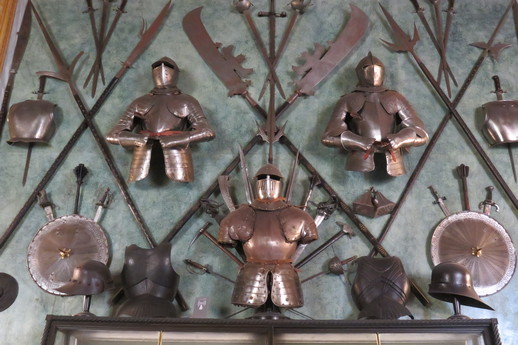
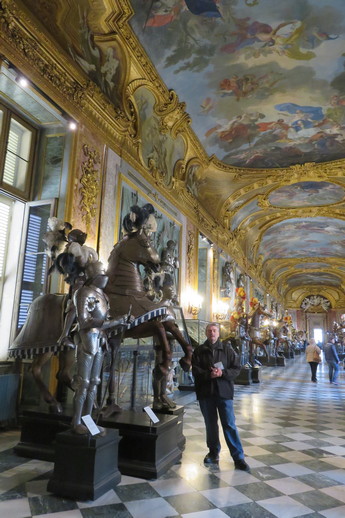
The Royal Palace (Palazzo Reale di Torino) was the palace of the House of Savoy. It was originally built in the 16th century and was later modernised by Christine Marie of France (1606–63) in the 17th century.
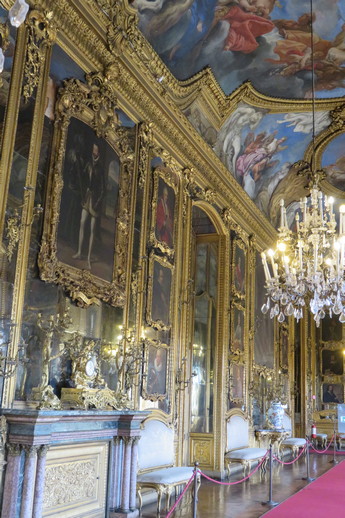
The palace also includes the Chapel of the Holy Shroud, which was built to house the Shroud of Turin. In 1946, the palace became the property of the state and was turned into a museum. In 1997, the palace was added to the list of UNESCO World Heritage Sites along with 13 other residences of the House of Savoy.
By coincidence, also in 1997, the Chapel of the Holy Shroud was severely damaged by a massive fire, the cause of which is still a mystery. The Shroud was saved but the chapel was closed to the public for more than 21 years while the restoration of its dome was completed. The chapel reopened in Sep 2018 after a cost of more than €30 million. The upper domed sections of the chapel are magnificent in their scale and in the mathematical perfection of their design (a series of alternating rotated hexagons).
In the following image you can see the damage to the altar that used to hold the Shroud. Within the next few months (European spring 2019), the chapel will be closed again while repairs to this altar are undertaken. We are fortunate indeed to have arrived during this window when the chapel is open despite it not actually displaying the Shroud itself.
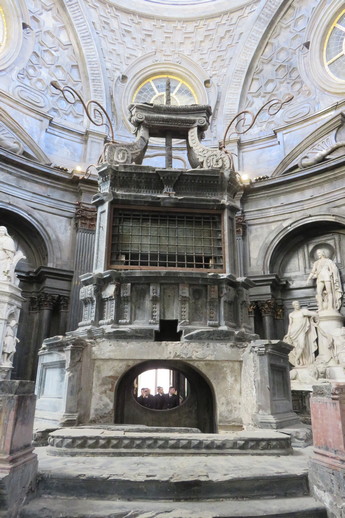
The Shroud is actually stored in the adjoining Cathedral of Saint John the Baptist. The Chapel of the Holy Shroud is directly connected to the Cathedral by two winding marble staircases either side of the sanctuary and above the sanctuary, it is open into the chapel. This design allows you to be seated in the Cathedral and look up above the sanctuary to see the altar that would be holding the Shroud. And just for good measure, a full sized reproduction of Leonardo da Vinci’s “The Last Supper” adorns the rear wall of the Cathedral and is in much better condition that the original.
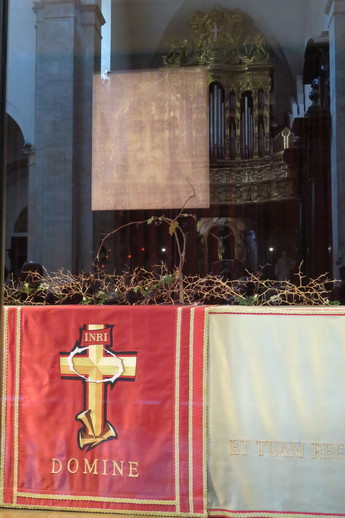
The Chapel of the Holy Shroud can be seen at the rear of the Cathedral (below) rising above the dome of the sanctuary. To the left is the bell tower – which we had to climb – of course.
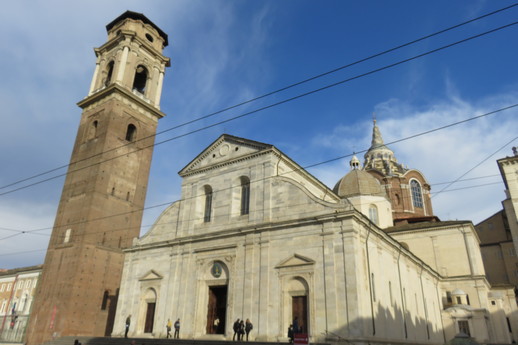
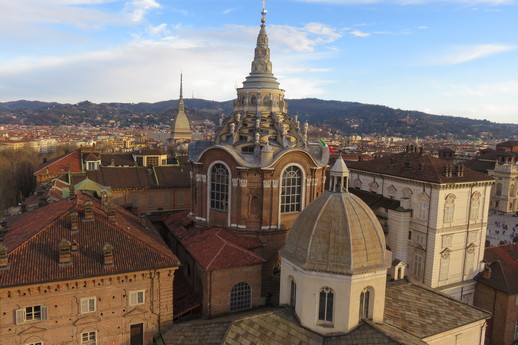
Sacra di San Michele
The Sacra di San Michele is an abbey built between 983 and 987 at the top of Mount Pirchiriano, 40 km away from Turin. It is understood to have been the inspiration of Umberto Eco’s best-selling novel “Il nome della rosa” (The name of the rose) which was turned into a movie of the same name in 1986 starring Sean Connery.
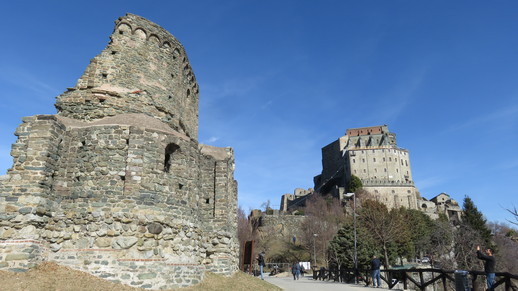
Getting there on foot involved taking a bus from Turin and then scrambling up a goat track.
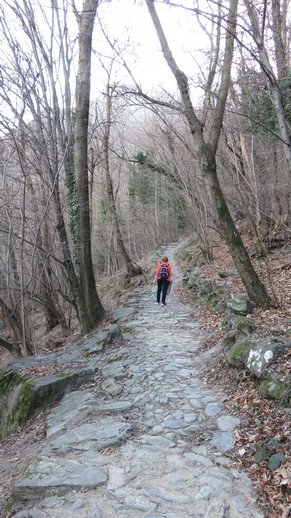
Chris setting a rapid uphill pace
According to Google, the goat track route would deliver us at the summit where the abbey is located within about 45 minutes. I’m not sure why Google would lie and I’m positive I traversed the route correctly but it took nearly two hours to reach the summit – arriving just in time for the midday Mass.
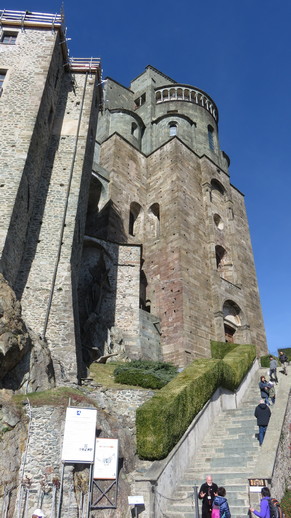
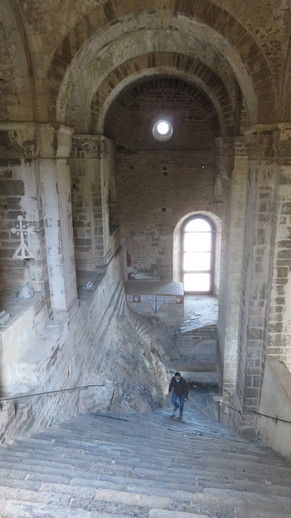
Celebration of the Mass was in Italian. Chris was sure the priest was spruiking the local pizzeria as there was a lots of Pizza here, Pizza there going on with associated arm waving. My feeling was the sermon made as much sense as some I’ve heard in English.
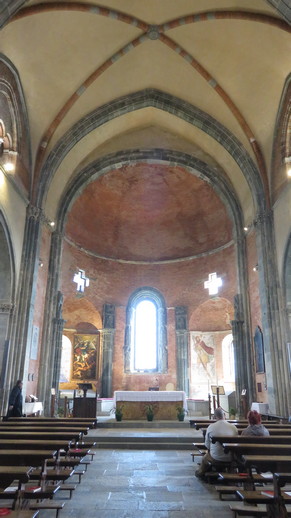
The return trip from the summit was just as arduous as the assent. In many places the path was hidden from view by large collections of windblown leaves making it both slippery and treacherous. Of course I came to grief and the following image is surprisingly clear despite Christine having to control her laughter while taking the photograph.
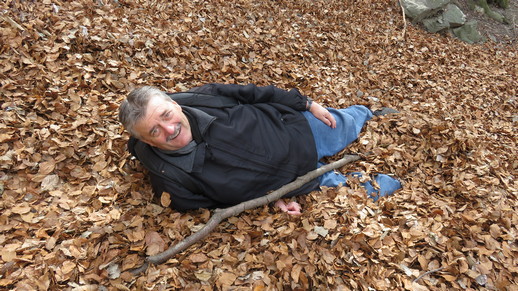
The downhill trek from Sacra of Saint Michele to Chuisa di San Michele
The Egyptian Museum
The Egyptian Museum of Turin is the world’s oldest Egyptian museum, founded in 1824 and ranks second in size only to one in Cairo.
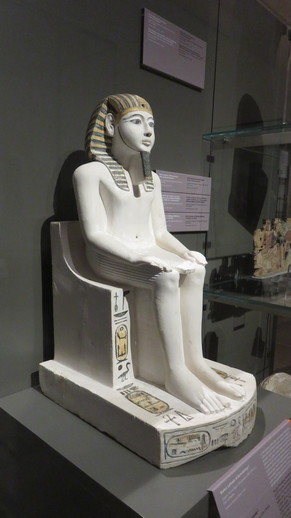
Dedicated exclusively to ancient Egyptian culture and art, the museum’s collection has been the subject of interest for some of history’s most important Egyptian scholars. Jean-François Champollion, who deciphered the Rosetta Stone, has studied artefacts held at this museum.
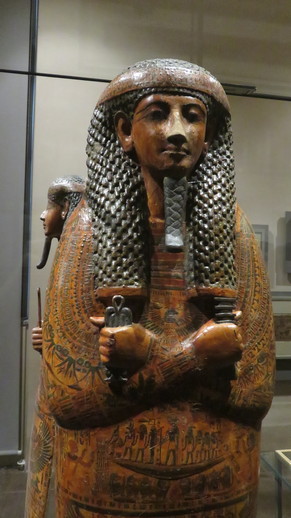
We spent a whole day in this museum such was the quality and breadth of material to view.
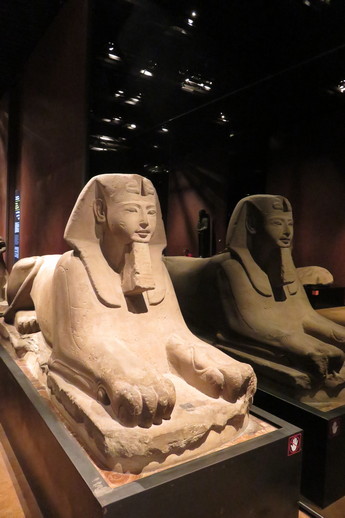
Parkland along the River Po and the Museum of the Holy Shroud
We spent the final day in Turin visiting a large park adjacent to the River Po and the Museum of the Holy Shroud.
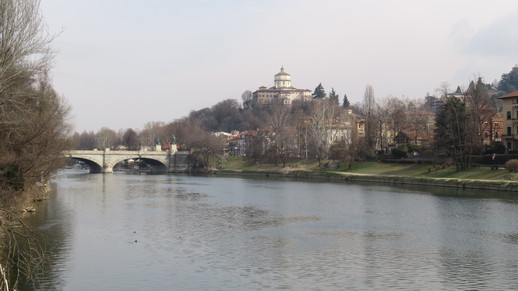
The Museum of the Holy Shroud presents historical, scientific and artistic aspects of research into The Holy Shroud. Scientific explorations commenced in 1898 with the first photographic images taken of the Shroud.
Turin turned out to be a magical city with much more to do than we could manage in the four and a half days we were there. Again we were blessed with the very best of weather.
We leave Turin and Italy making our way into France. Our first stop will be in Nice.
ciao bella Turin!
PS – Chris got pinged by the guards for walking on the grass in the Royal Gardens.
Loving the blog Greg and Chris! I am glad you didn’t break your leg from the fall! Chris, that photo must go into top 20 photos from the trip hehe. What great adventures!! Keep travelling safe and can’t wait for the next blog x
Thanks Danrie. I have already collected a number of equally embarrassing images of Christine dearest that should make the top 20 list for this trip. g